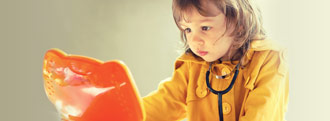Our Health Library information does not replace the advice of a doctor. Please be advised that this information is made available to assist our patients to learn more about their health. Our providers may not see and/or treat all topics found herein.
Topic Contents
Seasonal Affective Disorder (SAD)
Conditions Basics
What is seasonal affective disorder (SAD)?
Seasonal affective disorder, or SAD, is a type of depression that occurs during the same season each year. It is sometimes called winter depression or seasonal depression.
Anyone can get seasonal affective disorder (SAD), but it's more common in:
- Women.
- People who live far from the equator, where winter daylight hours are very short.
- Adults. It is less likely in children, teens, or older adults.
- People who have other mood disorders, such as depression.
What causes it?
Experts aren't sure what causes SAD. But they think it may be caused by a lack of sunlight. Lack of light may upset your "biological clock," which controls your sleep-wake pattern and other circadian rhythms. Lack of light may also cause problems with serotonin, a brain chemical that affects mood.
What are the symptoms?
Seasonal affective disorder (SAD) can come and go at about the same time each year. You may feel unhappy and tired during fall and winter. But you feel more cheerful and have more energy in spring and summer.
What are the symptoms?
If you have SAD, you may feel sad, grumpy, or anxious. You may lose interest in your usual activities, or you may gain weight. You may eat more and crave carbohydrates, such as bread and pasta. You may also have trouble concentrating and may sleep more but still feel tired.
How is it diagnosed?
To diagnose SAD, your doctor will ask if:
- You have been depressed during the same season and have gotten better when the seasons changed for at least 2 years in a row.
- You have symptoms that often occur with SAD, such as being very hungry (especially craving carbohydrates), gaining weight, and sleeping more than usual.
- You have other mood disorders, such as depression.
Your doctor may also do a mental health assessment to get a better idea of how you feel and how well you are able to think, reason, and remember. It can sometimes be hard to tell the difference between SAD and other types of depression. Many of the symptoms are the same.
How is SAD treated?
Light therapy is the main treatment for SAD. Medicines and counseling may also help.
- Light therapy.
Light therapy is exposure to light that is brighter than indoor light but not as bright as direct sunlight. The most common light therapy uses a special type of light. It's called a light box. Experts think it works by resetting your biological clock.
- Dawn simulation.
This is done while you sleep. A low-intensity light turns on at a set time in the morning before you wake up. It slowly gets brighter.
- Antidepressants.
Antidepressant medicines may help people who have SAD. They may be used alone. Or they may be used with light therapy.
- Counseling.
Some types of counseling can help you manage your symptoms. They can also help prevent future episodes. For example, cognitive behavioral therapy may help.
Related Information
Credits
Current as of: July 31, 2024
Author: Ignite Healthwise, LLC Staff
Clinical Review Board
All Ignite Healthwise, LLC education is reviewed by a team that includes physicians, nurses, advanced practitioners, registered dieticians, and other healthcare professionals.
Current as of: July 31, 2024
Author: Ignite Healthwise, LLC Staff
Clinical Review Board
All Ignite Healthwise, LLC education is reviewed by a team that includes physicians, nurses, advanced practitioners, registered dieticians, and other healthcare professionals.
This information does not replace the advice of a doctor. Ignite Healthwise, LLC disclaims any warranty or liability for your use of this information. Your use of this information means that you agree to the Terms of Use and Privacy Policy. Learn how we develop our content.
To learn more about Ignite Healthwise, LLC, visit webmdignite.com.
© 2024-2025 Ignite Healthwise, LLC.






